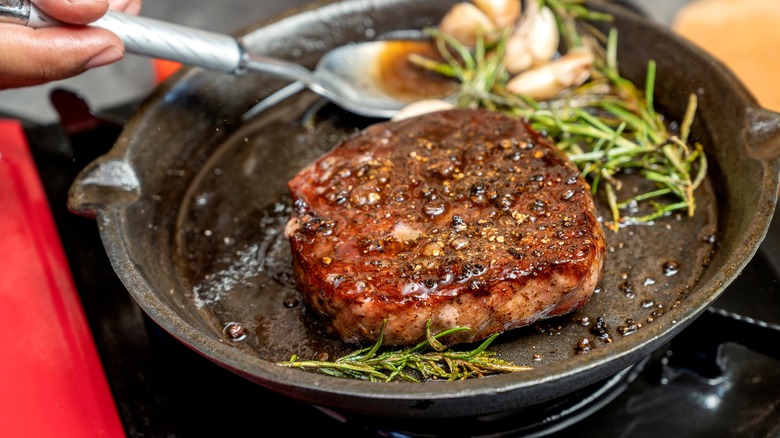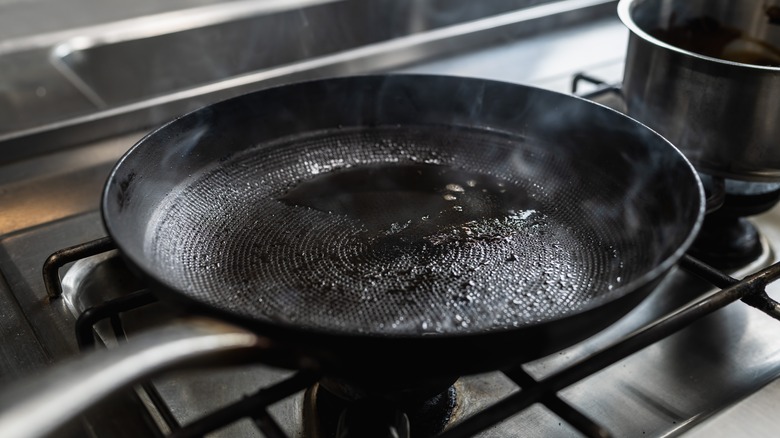The Simple Steak Mistake That's Preventing The Perfect Sear
A proper crust on a good steak creates a depth of flavor that can't be beat. But to achieve that crust, you have to follow a basic rule of cooking. Not preheating a pan is just one mistake you should avoid while cooking a steak, but it's easily avoided with just a little know-how.
A good sear comes from laying a steak flat against an already piping-hot surface. If the pan is cold when it's added, the beef absorbs heat that should build up in the metal. This heat then starts transferring, slowly, throughout the meat, cooking it internally before the outside has a chance to crust. This is a viable way to cook a steak, but only if you want a soft outside that lacks flavor from the Maillard reaction.
Given that the real difference between the Maillard reaction and caramelization is the temperature, it makes sense that getting your pan hot really matters. When the surface of meat reaches 300 degrees Fahrenheit, the searing heat from a pan rapidly forms a crust while the inside of the steak reaches your desired temperature. Getting the pan hot enough to trigger the Maillard reaction and bring a meat's internal temperature up without burning it is a delicate balance. However, being able to strike that balance is critical to a scrumptious steak.
How to properly preheat a pan
For a proper sear, you want the pan to reach between 425 and 450 degrees Fahrenheit. If you like your steaks more done, aim for a lower temperature and longer cooking time. If you like them rare, crank the heat up to 450 for a hot and fast preparation. Learning the best cuts of steak and how to cook them is the best way to learn how to achieve the perfect level of doneness for any cut.
Either way, a surface thermometer is a great help for determining the exact temperature of any cooking surface. If you don't have one, try the water droplet test instead. When the pan is hot enough, a couple drops of water should be able to fly around the pan without immediately evaporating, thanks to a neat little piece of science called the Leidenfrost Effect.
How long it takes a pan to heat up depends entirely on the pan's size, its metals, and the strength of your stove. It's impossible to give a firm number on how long to spend heating up your pan, so a careful eye and trust in your knowledge of your own tools are paramount to nailing the perfect steak crust. Stainless steel is better for a sear because meat sticks to it, just a touch, forming a better crust. You absolutely can use nonstick varieties, but the crust won't be quite as good.


